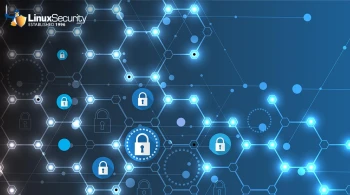Linux admins,
One of the ways Linux admins can minimize risk when using untrusted applications like WordPress is to run them in a container - lightweight, portable devices that bundle an application and its dependencies together to isolate the exposure it has on the rest of the system. How are you securing your systems with containers?
When you run WordPress in containers, each component (PHP, MySQL, and WordPress) operates in its isolated environment, reducing the likelihood of conflicts and security breaches. Stay tuned for the security best practices you need to know when containerizing WordPress.
I'll also explore the transformative potential of third-party risk management (TPRM) process automation, showing how technology can help improve accuracy and efficiency while enabling organizations to make speedier, data-driven decisions without compromising compliance and focusing on Linux distro solutions.
Please share this newsletter with your friends to help them gain critical Linux security insights. Is there a Linux security-related topic you want to cover for our audience? We welcome contributions from passionate, insightful community members like you!
Yours in Open Source,

Containerizing WordPress: Best Practices for Robust Security and Management
Keeping WordPress secure can be challenging, especially when considering Linux security concerns in a typical LAMP stack setup. Most WordPress security issues stem from third-party plugins, insecure coding, and server-level vulnerabilities in a typical LAMP stack setup-Linux, Apache, MySQL, PHP-to build and deploy WordPress. So, malicious attackers could gain an undue advantage if you don't ensure proper care and security for these weaknesses. This makes it more important than ever to fortify WordPress security. That's where containerization comes in. Nowadays, most WordPress development companies use containers and tools like dockers for robust security. Containerization is a virtual process where all application components are packed as a single unit, supporting Linux cybersecurity through isolation. On the other hand, Docker allows us to run WordPress in isolated containers, reducing the chances of conflicts and security breaches and making it much easier to manage updates and dependencies. So, knowing how to set up, secure, and manage WordPress and containers is essential. We'll guide you through the basics of containerizing WordPress and explore best practices for maximizing Linux cybersecurity and ensuring streamlined management. |
Guide to Automating Third-Party Risk Management in Linux Environments
As more vendors, suppliers, and contractors become integral to an organization's operation, the need to identify and mitigate risks associated with such external partners is significant. Third-party risk management automation (TPRM) is essential in this process. TPRM involves integrating technology that streamlines and automates various methods for identifying, assessing, and mitigating risks from external partners. I’ll explore the transformative potential of TPRM process automation in detail, showing how technology can help improve accuracy and efficiency while enabling organizations to make speedier, data-driven decisions without compromising compliance and focusing on Linux distro solutions. |















